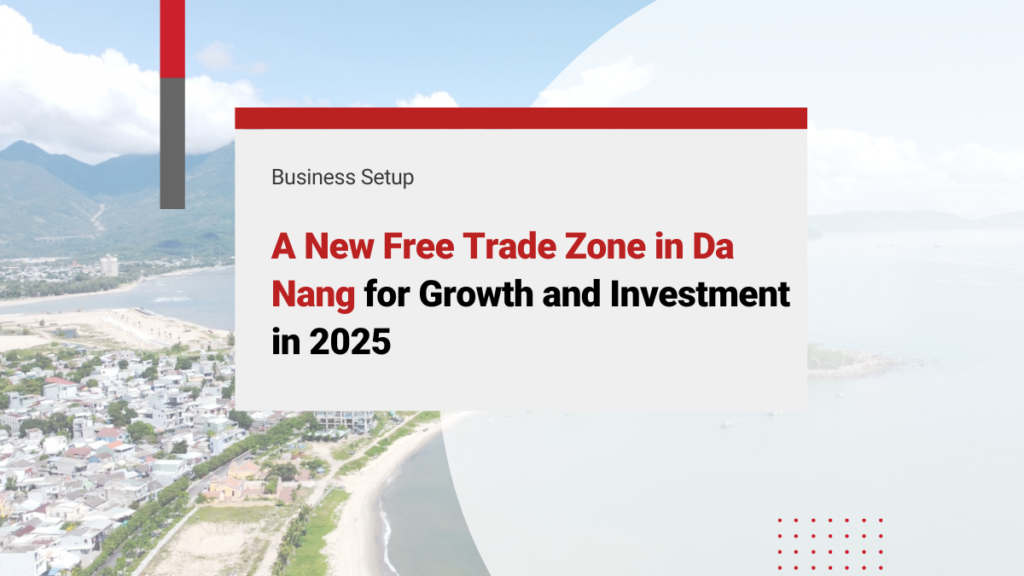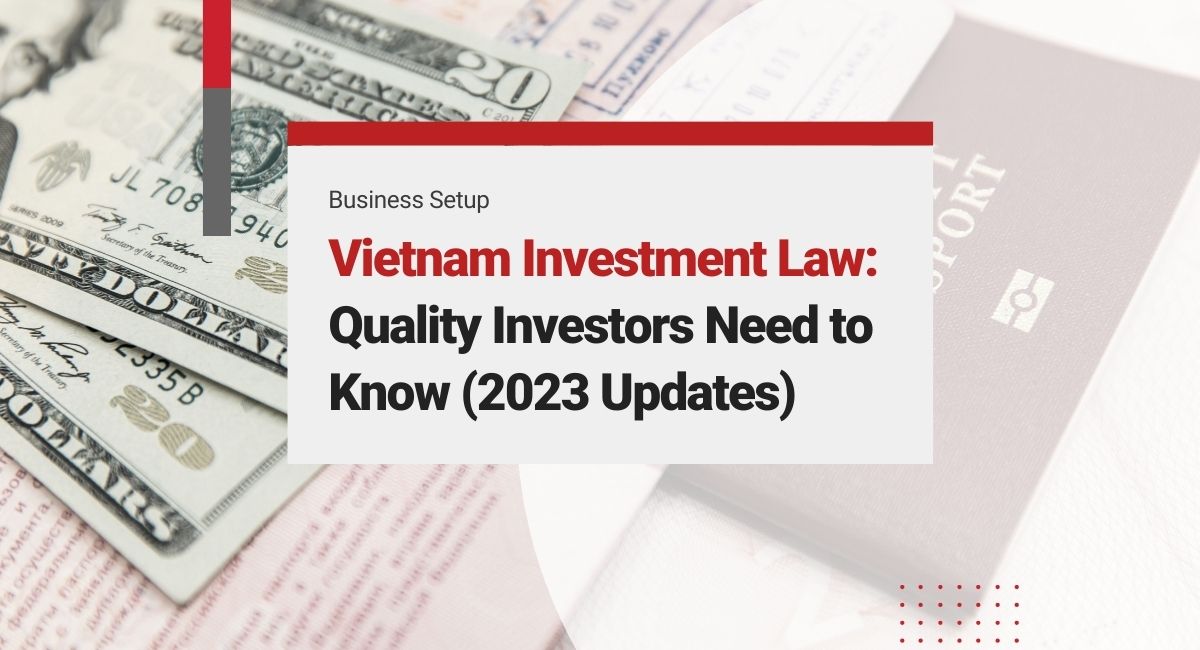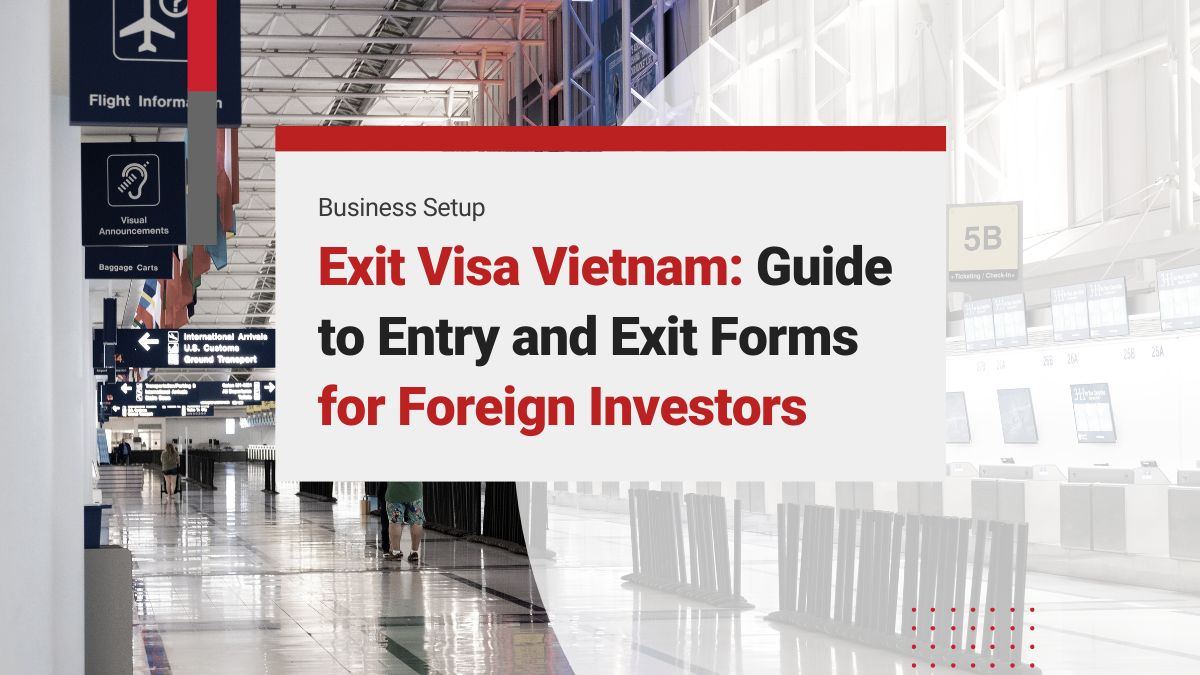On June 22, 2025, Vietnam entered a new economic chapter. In a high-profile ceremony attended by government leaders, central agencies, and major investors, its Deputy Prime Minister officially announced the creation of the Da Nang Free Trade Zone (FTZ) – the first of its kind in the country. The event not only marked a historic milestone for the coastal city of Da Nang but also signaled a broader ambition: to position Vietnam as a key node in global trade and supply chains.
The Free Trade Zone model, widely adopted by developed economies around the world, offers businesses a range of incentives including duty-free import-export processing, tax exemptions, and reduced bureaucracy.
With this model, Da Nang aims to attract major investments in high-tech manufacturing, digital services, and logistics, while creating thousands of jobs for the region.
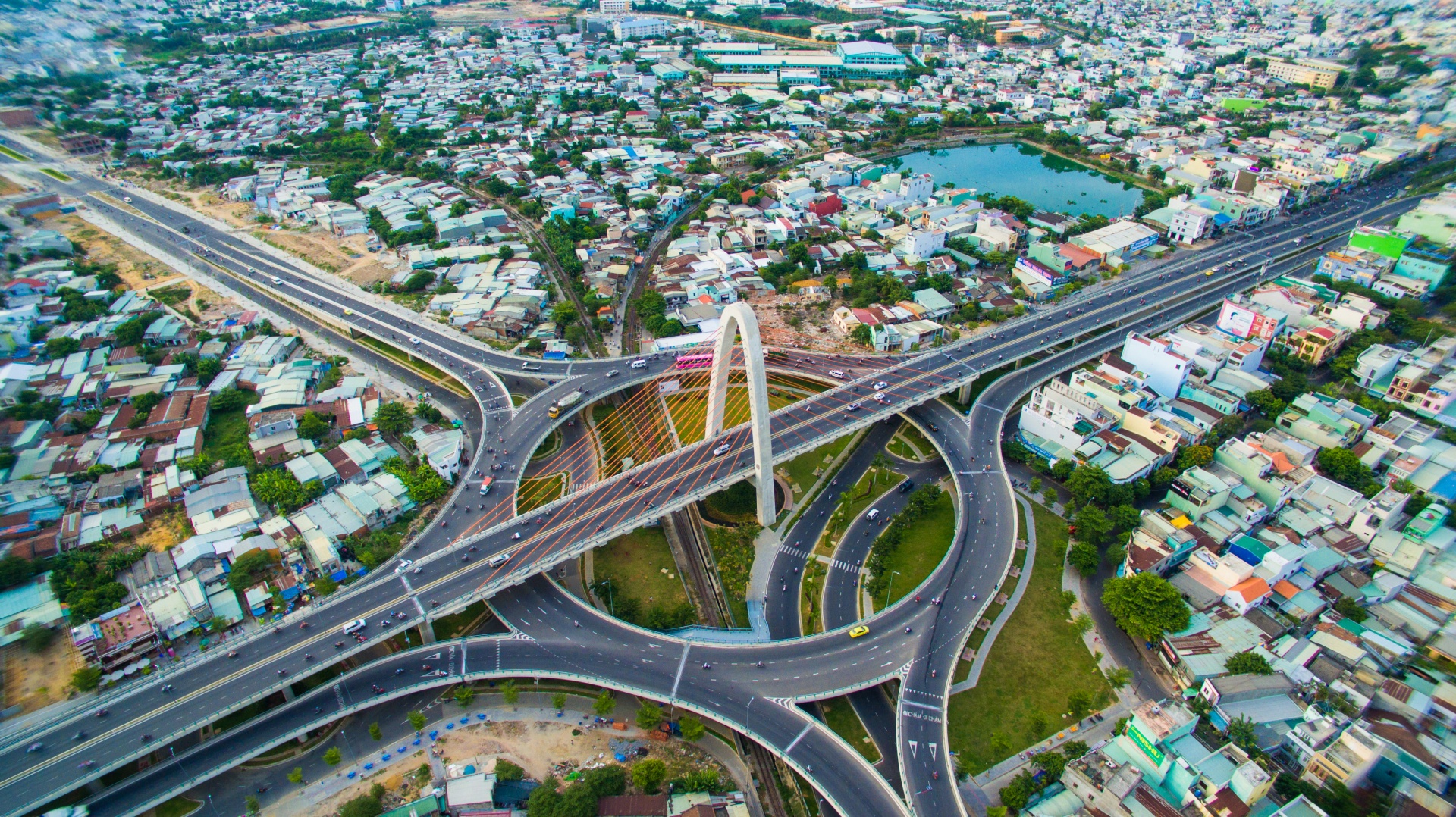
Why the Free Trade Zone model matters
Global trends and economic imperatives
Free Trade Zones are internationally proven mechanisms to stimulate economic growth, enhance trade, and improve competitiveness. They originated as port-based hubs where goods could be stored, processed, or manufactured with minimal customs interference. Today, they have evolved into multifaceted ecosystems where manufacturing, technology, finance, and services intersect.
Globally recognized FTZs include Rotterdam in the Netherlands, Shanghai in China, Singapore, and Los Angeles in the United States. These zones not only attract capital but also become catalysts for innovation, regional integration, and workforce development.
Vietnam’s economy is already deeply integrated into global supply chains, especially in electronics, garments, and agriculture. But the country has long lacked a formal FTZ framework. By launching the Da Nang FTZ, Vietnam is catching up quickly with its regional competitors.
The FTZ also aligns with Vietnam’s broader strategy of upgrading its industrial base, moving up the value chain, and expanding into services and high-tech sectors. Combined with international financial services and logistics, the FTZ creates a modern, diversified economic ecosystem.
Strategic location and connectivity
Strategically located in Central Vietnam, Da Nang connects the East-West Economic Corridor with the Lien Chieu Deep Sea Port and Da Nang International Airport. This geographic advantage, paired with the city’s push for innovation, makes it an ideal playground for Vietnam’s venture into the FTZ model.
But opportunities come with challenges. Legal ambiguities, infrastructure bottlenecks, and competition from neighboring FTZs in Asia are just some of the hurdles Da Nang must overcome. Yet, if managed well, the Da Nang Free Trade Zone has the potential to become Vietnam’s fourth Special Economic Zone (SEZ) and a pivotal gateway for global commerce.
The city is located at the center of Vietnam’s coastline and forms a vital link in the East-West Economic Corridor, which stretches across Southeast Asia. This corridor connects Myanmar, Thailand, Laos, and Vietnam to international sea routes.
The FTZ’s direct access to:
- Lien Chieu Port (deep-sea capability);
- Da Nang International Airport (expansion-ready); and
- National highways and railway lines.
This makes it a logistical dream for businesses engaged in import-export operations. This infrastructure enables seamless movement of goods between air, sea, and land, which is vital for modern global supply chains.
Moreover, the future integration of the FTZ with industrial parks like Hoa Cam Phase 2, Hoa Nhon, and Hoa Ninh, and logistics hubs like inland ports and rail depots, will consolidate Da Nang’s role as an international gateway.
Read More: Business in Danang’s Industrial Parks: Reasons to Invest
What the Free Trade Zone offers to investors
Incentives and functional zones
The Da Nang Free Trade Zone is designed to be investor-friendly. Businesses operating in the FTZ will benefit from:
- Tax incentives: Reduced or exempted corporate income tax and import-export duties.
- Simplified customs procedures: Fast-track clearance and reduced red tape.
- Investment support: Priority access to land, infrastructure, and digital services.
Functional areas within the FTZ will include:
- High-tech manufacturing and processing.
- Logistics and warehousing.
- Digital innovation and software development.
- Financial and trade services.
This diversification makes the FTZ attractive to a wide range of industries from semiconductors and green energy to fintech and e-commerce.
Already, eight major investors have signed Memorandums of Understanding (MoUs) to develop facilities within the FTZ. Four others, including Amata Vietnam and European Plastics JSC, have been granted investment research permits.
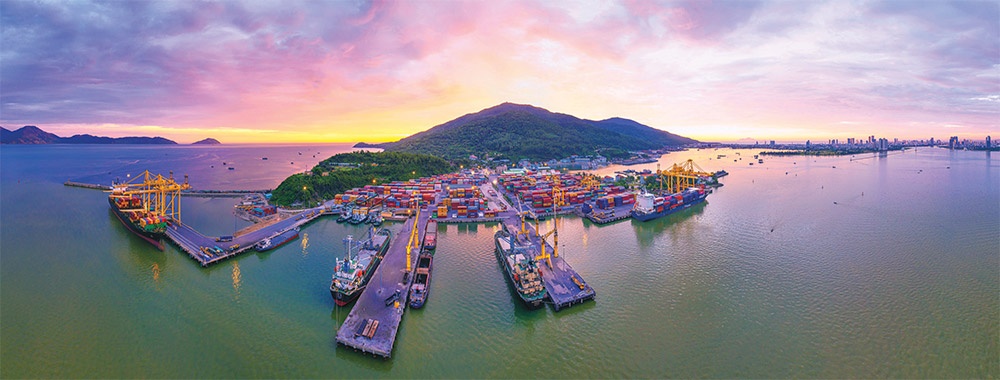
Job creation and local development
The Free Trade Zone (FTZ) is expected to transform Da Nang’s labor market, particularly in key sectors such as digital technology and innovation, logistics and transportation, and high-value manufacturing. As investment flows into these areas, demand for skilled labor will rise, creating new career opportunities across a range of industries.
This shift will open the door to extensive upskilling and professional development for the local workforce. With higher-paying jobs and improved working conditions, residents will see a boost in their overall quality of life. Moreover, the enhanced employment prospects in Da Nang could help curb the long-standing trend of talent migration from the Central region to major urban centers like Ho Chi Minh City and Hanoi, retaining skilled professionals and fostering more balanced regional development.
Challenges to address
Regulatory hurdles
Despite the excitement, Vietnam currently lacks a clear legal framework to govern Free Trade Zone. While there are laws for economic zones, industrial parks, and export processing zones, these differ from internationally recognized FTZs.
To ensure success, Vietnam must:
- Draft comprehensive FTZ legislation aligned with global norms.
- Clarify investment rights and dispute resolution mechanisms.
- Ensure transparent, corruption-free administrative procedures.
Without regulatory clarity, investor confidence may weaken, and the FTZ could lose its competitive edge against similar zones in Singapore, Malaysia, or China.
Infrastructure development
Developing world-class infrastructure inside and around the FTZ is a massive undertaking. It includes:
- Expanding Lien Chieu Port for higher throughput.
- Building digital infrastructure for e-commerce and fintech services.
- Ensuring reliable electricity, water, and waste management.
- Constructing the Olympic-standard transport links.
These projects require long-term financing, expert planning, and execution oversight. Public-private partnerships (PPPs) will be essential to share the burden and attract specialized expertise.
Environmental sustainability
As Da Nang pursues industrialization and trade growth, it must also address the environmental risks that come with rapid development. Without proper measures, increased activity in logistics and manufacturing could lead to pollution and long-term ecological harm.
To mitigate these risks, the city should adopt green building standards, implement smart logistics to cut carbon emissions, and enforce pollution control in processing and storage facilities.
Sustainability is no longer optional. International investors now expect strong environmental standards, and local communities are increasingly holding the government accountable for environmental protection.
The bigger picture
Regional integration and the Asia-Pacific Gateway
The Free Trade Zone (FTZ) serves as a key instrument for regional and international integration. Da Nang’s new status boosts Vietnam’s role within ASEAN’s production networks, as well as major trade agreements like RCEP and CPTPP.
The FTZ also strengthens Vietnam’s position along vital Asia-Pacific and global shipping routes. Strategically located at the endpoint of the East-West Economic Corridor, Da Nang enhances the country’s economic and diplomatic profile as a bridge between East and West.
Synergy with the International Financial Center
The planned integration of the FTZ with the Da Nang International Financial Center will add tremendous value. Together, they will form a dual-engine economic cluster: one focused on trade and manufacturing, the other on capital and services.
This synergy is expected to:
- Attract international financial institutions and fintech startups.
- Enable efficient financing for trade and infrastructure.
- Create a vibrant environment for innovation and entrepreneurship.
Such a model mirrors what’s been achieved in Shanghai’s Pudong district or Singapore’s Marina Bay Financial Centre, where trade and finance feed into each other to generate exponential growth.
The road ahead
For Da Nang’s Free Trade Zone (FTZ) to succeed and scale, several key priorities must be addressed.
Legal reform should be fast-tracked to establish clear national legislation specific to FTZ governance. At the same time, comprehensive master planning must be finalized, covering land use, zoning, and infrastructure connectivity.
To streamline operations, a one-stop shop for permits, clearances, and dispute resolution should be set up, making it easier for investors to navigate regulations. Public-private partnerships (PPPs) will be essential. Transparent bidding and strong incentives can attract top global developers and logistics firms.
Workforce development is equally important. Partnering with universities and vocational schools will help train local talent in logistics, digital services, and manufacturing to meet rising demand.
Finally, the FTZ’s progress should be tracked through key performance indicators such as FDI inflows, job creation, exports, and environmental compliance, ensuring it stays on course for long-term impact.
Read Related: Key Insights on Vietnam’s Industrial Zones in 2025
Conclusion
The establishment of the Da Nang Free Trade Zone marks a bold step toward a more globally integrated, competitive, and diversified Vietnamese economy. While challenges remain, the city’s strategic location, forward-looking leadership, and business-friendly policies provide a strong foundation for long-term success.
If effectively executed, the Da Nang FTZ will do more than just attract foreign capital. It will redefine Central Vietnam’s role in global trade, set a precedent for future FTZs in Hai Phong or Dong Nai, and offer a replicable model for sustainable urban-industrial development.
Vietnam’s economic journey has often been marked by cautious pragmatism. With the Free Trade Zone, Da Nang is now writing a new chapter of ambition, connectivity, and global relevance.
